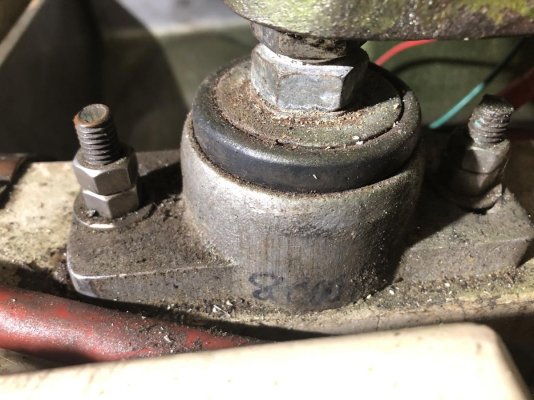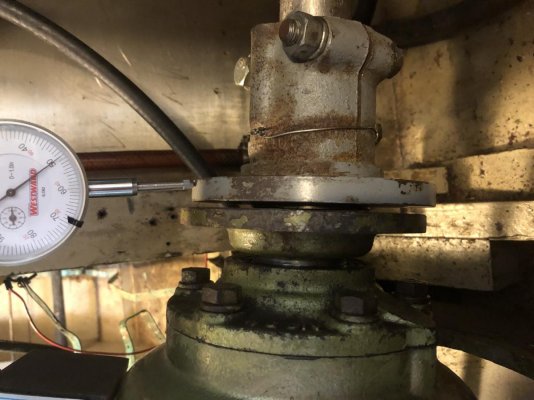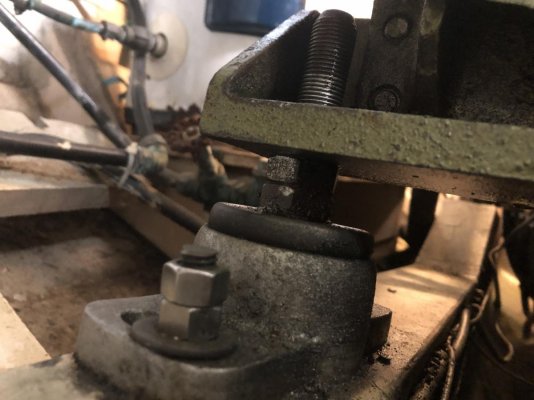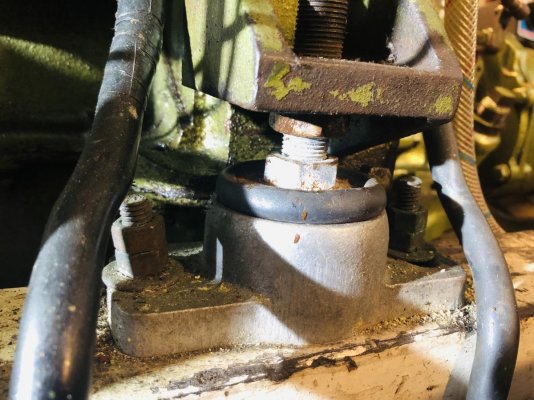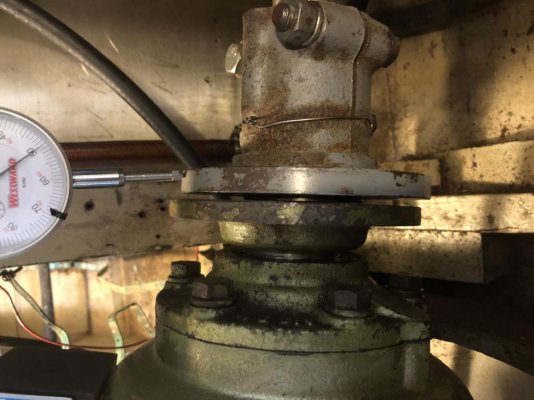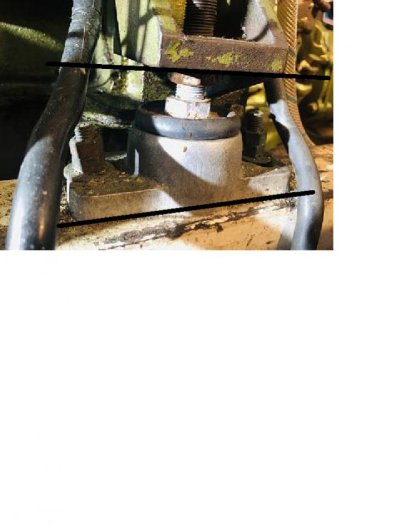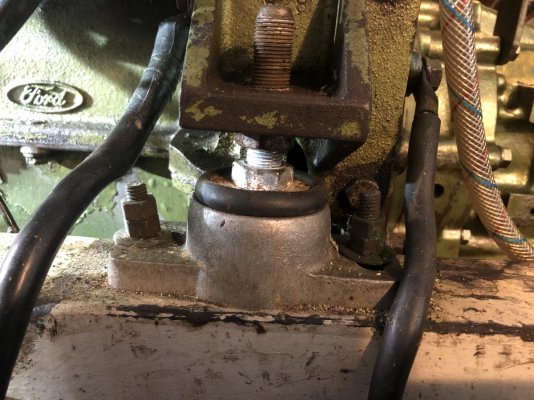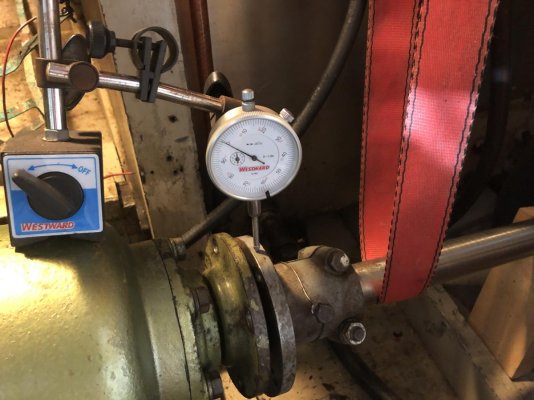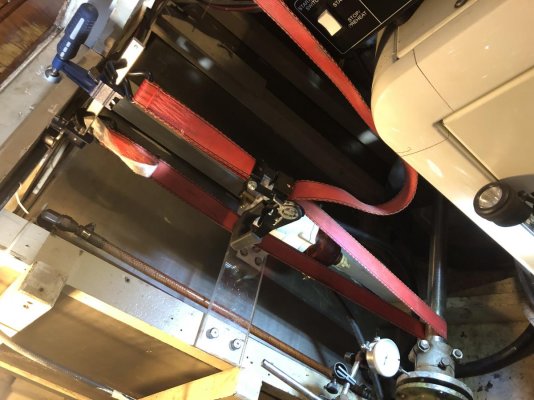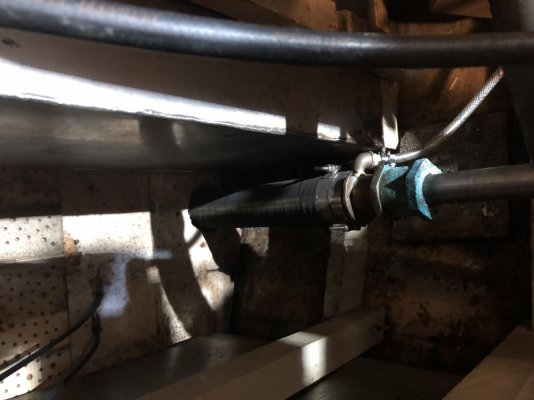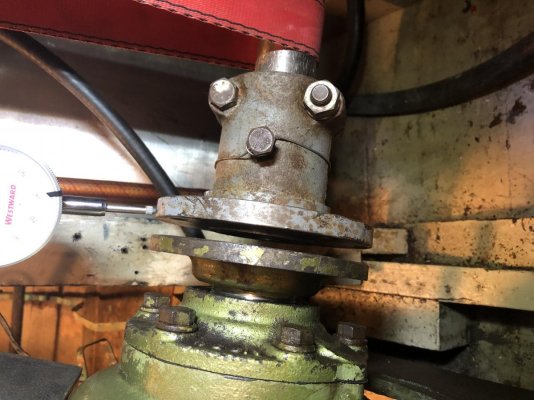Oil Gypsy
Veteran Member
- Joined
- Sep 25, 2019
- Messages
- 55
- Location
- Canada
- Vessel Name
- Dauntless
- Vessel Make
- Grand Banks 36 Classic #248
So……
We have two Ford Lehmans with AS7-71C transmissions. The starboard transmission developed a leak at the oil seal, Ive replaced the seal but in doing so opened another can of worms.
When I disconnected the shaft the coupling was at the top of the vertical movement range of the shaft, to reconnect the coupling I had to really heave on it. I put a dial gauge on the shaft coupling and it had a range of about 0.35” from resting bottom to fully lifted without straining, to reconnect the coupling I had to lift it more to about 0.4”.
When we bought the boat we were told the mounts had recently been changed, it would appear that the alignment was poorly done, if at all.
Ive made a temporary support for the shaft and adjusted it so that its at the mid point of the vertical movement range, 0.17”
Now by sight the back of the engine needs to go down about 0.2” and the front even more to make the shaft coupling and transmission output connection parallel.
This is where the problems start, the mounts at the front of the engine are almost bottomed out, maybe one thread remaining, certainly not enough to line up the engine properly.
I believe the only options are to either change the mounts or lift the engine and recess the mounts into the engine bearers (these are 3” wide and 12” deep).
If anyone has any experience or better ways of resolving the issue I would really appreciate your input.
The photos show the front engine mounts which are almost bottomed out, the rear engine mount which has about a 1/4” range until it bottoms out and the coupling/connector with the shaft supported at the mid point of the vertical range.
We have two Ford Lehmans with AS7-71C transmissions. The starboard transmission developed a leak at the oil seal, Ive replaced the seal but in doing so opened another can of worms.
When I disconnected the shaft the coupling was at the top of the vertical movement range of the shaft, to reconnect the coupling I had to really heave on it. I put a dial gauge on the shaft coupling and it had a range of about 0.35” from resting bottom to fully lifted without straining, to reconnect the coupling I had to lift it more to about 0.4”.
When we bought the boat we were told the mounts had recently been changed, it would appear that the alignment was poorly done, if at all.
Ive made a temporary support for the shaft and adjusted it so that its at the mid point of the vertical movement range, 0.17”
Now by sight the back of the engine needs to go down about 0.2” and the front even more to make the shaft coupling and transmission output connection parallel.
This is where the problems start, the mounts at the front of the engine are almost bottomed out, maybe one thread remaining, certainly not enough to line up the engine properly.
I believe the only options are to either change the mounts or lift the engine and recess the mounts into the engine bearers (these are 3” wide and 12” deep).
If anyone has any experience or better ways of resolving the issue I would really appreciate your input.
The photos show the front engine mounts which are almost bottomed out, the rear engine mount which has about a 1/4” range until it bottoms out and the coupling/connector with the shaft supported at the mid point of the vertical range.

